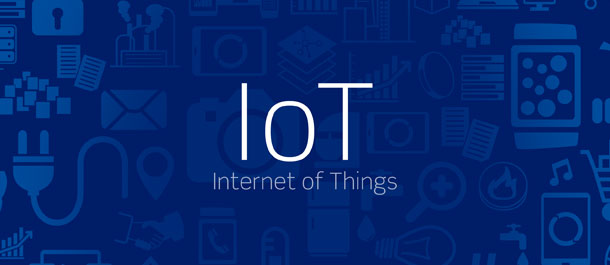The Inside Scoop on IOT

WHAT DOES THE INTERNET OF THINGS MEAN FOR NETWORK PROFESSIONALS?
Over the last five years the Internet of Things (IoT) has become a buzzword used to describe the next evolution of wireless connectivity. And while IoT seems to be the acronym on everyone's lips, it is more than just jargon.
IoT is the network of physical devices capable of collecting and sharing data through integrated sensors and network connectivity. While this level of automated connectivity may seem far off, the truth is it's already happening. Map applications provide current travel times and updates for common destinations like work or home, and fully automated environments already exist, such as facilities capable of smart metering, energy monitoring, and health detection.
As IoT becomes more prevalent and more "things" become connected, how will enterprise networks handle the increase in demand? We asked Asef Baddar, RCDD, DCD, Director of Technology for Leviton Middle East, about the impact of IoT.
How is the rise of IoT affecting network cabling trends?
Wireless devices are a significant contributor to the rise of IoT, and with the increasing demand for wireless connectivity it's important to have a flexible, scalable, and reliable structured cabling backbone to support related bandwidth growth. Existing cabling infrastructures may not be capable of providing the bandwidth needed for optimal performance. Many enterprise and mission-critical networks already rely on more powerful 10 Gb/s speeds over fiber, with an eye on 40, 100, and even 400 Gb/s for future upgrades in data centers. With the tremendous growth in data and data processing, IoT has had the greatest impact to date on data centers. We are talking about zettabytes of data.
Enterprise data centers — whether they be privately-owned, with third-party co-location facilities, or hosted through very large cloud providers — are being planned with long-term upgradability and migration plans to connect and manage fog computing outposts, pod-based back-ups, and edge facilities that get the processing closer to the devices for faster overall performance.
What about future deployments of 5G or "Fifth Generation" to support mobile wireless and IoT; will this new technology reduce the need for network cabling?
5G networks will actually require a high-bandwidth wired infrastructure in the backhaul to deliver full 5G performance. Wireless alone won't be able to support 5G in the backhaul. For example, the Expo Dubai 2020 location is the first commercial customer for 5G in the Middle East, Africa, and South Asia. Part of the new site's network includes deploying more than 200 kilometers of fiber.
Also, deployments of 5G will be slow, and limited to dense urban areas in the near future. There will be a large CAPEX to install all the 5G electronics, which means it won't get installed unless there can be a return on that investment.
Some IoT devices rely on Power over Ethernet (PoE). Do cabling systems for PoE change with all of these additional connections?
PoE is playing a bigger role in a range of network applications, especially as the technology expands to support more devices at higher power levels. Applications for industrial, healthcare, retail, and hospitality will all rely on more PoE connections and higher wattage PoE. With these changes, cable bundles have the potential to generate excess heat, so it is important to use the right cabling and connectivity. System components should be designed to minimize temperature build-up and meet industry standards for performance. Also, higher category cabling such as Cat 6A is better at minimizing temperature increases while supporting devices that require higher power.
What changes are happening in data center networks as a result of IoT?
As I mentioned, data centers networks are already moving to 100 Gb/s and greater speeds. The migration path for many enterprise data centers will take advantage of multimode cabling while moving to 10, 40, and 100 Gb/s in the future, while cloud provider networks will move to 100 Gb/s uplinks and 25 Gb/s at the server in the near future. We can also expect future migrations to 200 and 400 Gb/s uplinks and 50 and 100 Gb/s at the server.
To better prepare for these changes, we recommend installing a 24-fiber MTP-based cabling infrastructure, providing data center managers with the flexibility to meet current needs, with the ability to change and adapt to higher-speed applications as they emerge. A 24-fiber MTP backbone won't need to be replaced when tech refreshes happen, allowing for an easier transition when upgrades are required due to greater IoT bandwidth demands.


